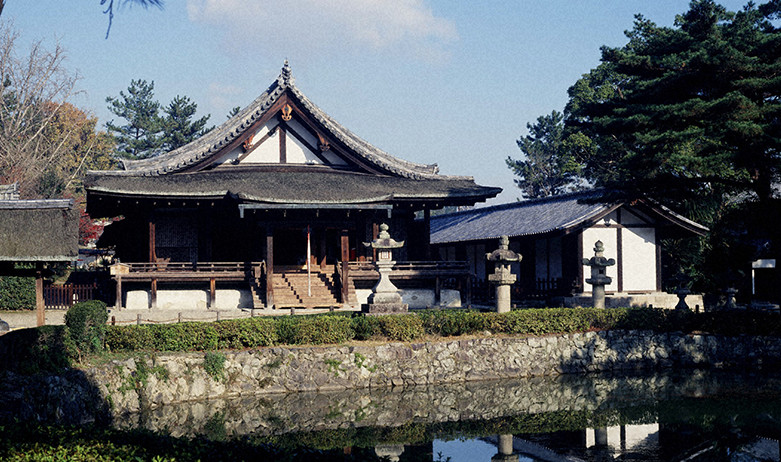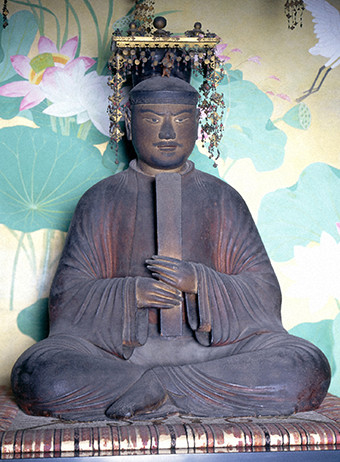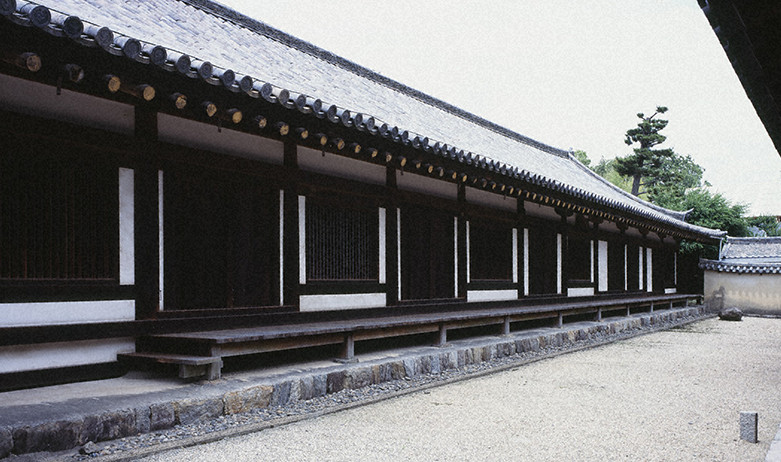-
Top

-
introduction

- Shōryōin

Shoryoin
The Shoryoin is a temple dedicated to the worship of Shotoku Taishi (574–622). It was also used as living quarters for priests in the Nara period (710–794).
This long and narrow building, aligned on a north to south axis, stands to the east of the Western Precinct. The southern third of the building was renovated in 1121, but the remaining two-thirds retain much of its original appearance.
The Shoryoin enshrines a statue of Shotoku Taishi along with statues of his attendants, all of which are said to date back to 1121. The statues of Jizo Bosatsu and Nyoirin Kannon date from the beginning and the end of the Heian period (794–1185) respectively.
Worship of the deified Shotoku Taishi reached a peak in the Kamakura period (1185–1333). During this time, a great many statues, portraits, and other icons of the prince made from the 12th to 13th century came to be enshrined here.

Statue of Shotoku Taishi
Shotoku Taishi (574–622), the son of Emperor Yomei, played a central role in the acceptance and establishment of Buddhism after it was brought to Japan from the Asian continent in the mid-sixth century.
This 84.2-centimeter-tall statue of a seated Shotoku Taishi in court-style dress and holding a scepter was carved in 1121. The statue depicts the prince between the ages of 35 and 46, when he preached a sermon about the Lion’s Roar of Queen Srimala Sutra to Empress Suiko (554–628).

Higashi Muro (East Quarters)

Nishimuro and Hall of Three Sutras (Sangyoin)
The Nishimuro, which was originally a living quarters for temple priests, are located to the west of the covered corridor of the western precinct of Horyuji. The structures were lost in a fire that occurred sometime between the years 1077 and 1081. The Hall of Three Sutras was built on the southern side of the structure in 1231 while the Nishimuro was rebuilt in 1268. The Hall of Three Sutras, known as the Sangyoin in Japanese, takes its name from the Sangyō Gishō, or Annotated Commentaries on the Three Sutras. These commentaries on Buddhist texts are attributed to Shotoku Taishi (574–622), the founder of Horyuji Temple. One of the teachings found in these writings is the belief that all living beings will find enlightenment. The commentaries date to the year 615, making them possibly the oldest extant writings in Japan. Every year from May 16 to August 15, lectures known as Ango are held at the Nishimuro, and temple priests lecture on the sutra commentaries that make up the Sangyō Gishō.